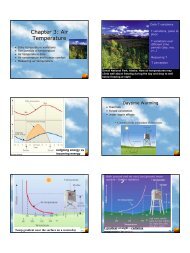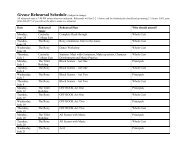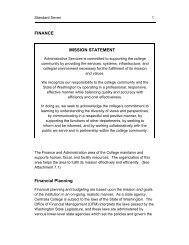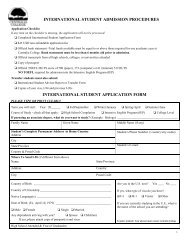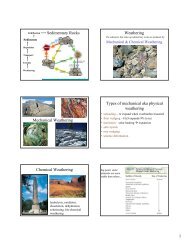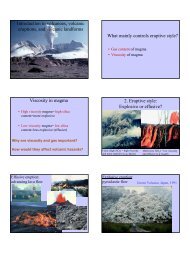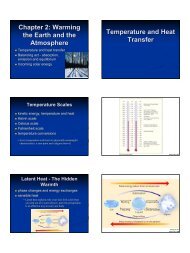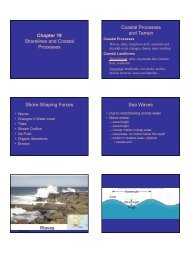Chapter Overview Marine Sediments Marine Sediment Classification
Chapter Overview Marine Sediments Marine Sediment Classification
Chapter Overview Marine Sediments Marine Sediment Classification
You also want an ePaper? Increase the reach of your titles
YUMPU automatically turns print PDFs into web optimized ePapers that Google loves.
Neritic Deposits• Dominated by lithogenous sediment, maycontain biogenous sediment• Carbonate Deposits– Carbonate minerals containing CO 3– <strong>Marine</strong> carbonates primarily limestone –CaCO 3– Most limestones contain fossil shells• Suggests biogenous origin– Ancient marine carbonates constitute 25% ofall sedimentary rocks on Earth.Calcareous Oozeand theCCD© 2011 Pearson Education, Inc.© 2011 Pearson Education, Inc.Carbonate Deposits• Stromatolites– Fine layers ofcarbonate– Warm, shallow-ocean,high salinity– CyanobacteriaCalcareous Ooze and the CCD• Scarce calcareous ooze below 5000 meters(16,400 feet) in modern ocean• Ancient calcareous oozes at greater depths ifmoved by sea floor spreading© 2011 Pearson Education, Inc.© 2011 Pearson Education, Inc.Calcareous Ooze and the CCD• CCD – Calcite compensation depth– Depth where CaCO 3 readily dissolves– Rate of supply = rate at which the shellsdissolve• Warm, shallow ocean saturated withcalcium carbonate• Cool, deep ocean undersaturated withcalcium carbonate– Lysocline – depth at which a significantamount of CaCO 3 begins to dissolve rapidly© 2011 Pearson Education, Inc.Sea Floor Spreading and <strong>Sediment</strong>Accumulation© 2011 Pearson Education, Inc.





